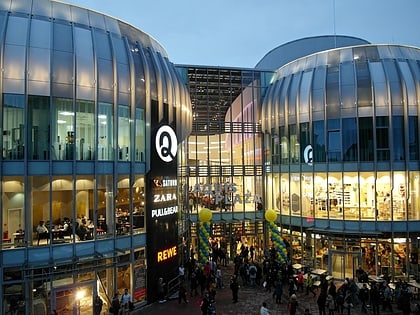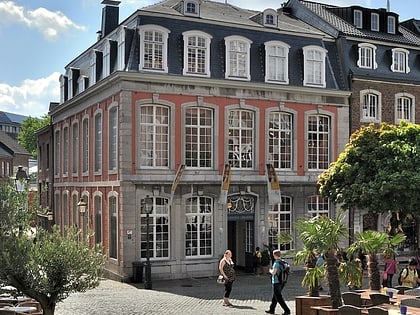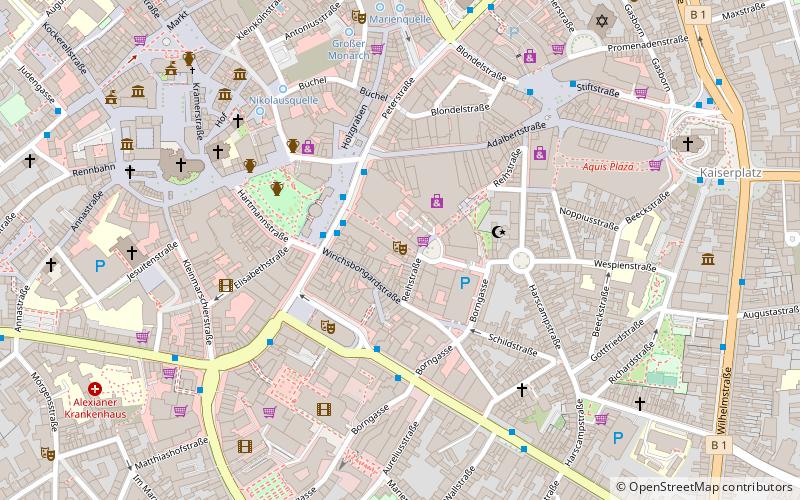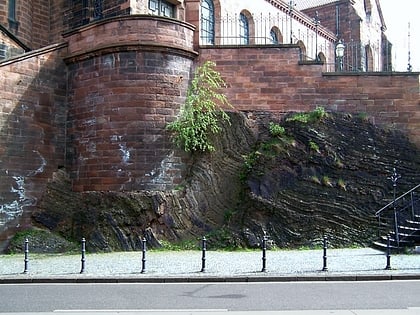Kongreßdenkmal, Aachen


Facts and practical information
The Congress Monument is an architectural monument commemorating the 1818 Monarch Congress in Aachen, built on the historic site on Adalbertsteinweg in 1836-1844, based on designs by the 1822 land inspector Johann Peter Cremer and Schinkels/Cremers of 1837, and dismantled in 1914 and moved to the Stadtgarten Aachen in 1928.
The trigger for the construction of the monument was a meeting of the rulers King Frederick William III of Prussia, Tsar Alexander of Russia and Emperor Francis I of Austria on the occasion of the fifth anniversary of the Battle of Leipzig on October 18, 1818 during the Aachen Congress, "in front of the Adalbert Gate" where they commemorated the event with a military service and then renewed their Leipzig vow to work "for the salvation of the nations, for the establishment of law and truth".
Impressed by this, it was decided in Aachen to erect a monument at the site. In 1822, Cremer submitted a design for this, which was taken up again during the visit to the Rhineland of Crown Prince Frederick William, later King Frederick William IV, when the prince laid the foundation stone for the monument during his stay in Aachen on October 5, 1836. However, the work stalled until the following year, when a delegation from Aachen, which was in Berlin for the construction of the railroad, approached the crown prince about the monument. This prompted Schinkel to draw up a sketch. Since this was "in a sense intended to perpetuate a religious act," Schinkel considered the "form of a temple or chapel." Cremer translated this into a design that included a cost estimate of 11,600 talers. In 1839, the Aachen city architect Friedrich Joseph Ark was commissioned to continue the work, and he finally had the monument built on the historic vow site from Carrara marble by the Aachen contractor Andreas Hansen between 1841 and 1844. The marble work was done by the Liège master Ballat. The bronzes representing the heads of the monarchs in the ridge of the monument were created by the sculptor Friedrich Porcher according to a design by the teacher Nikolaus Salm. The monument was inaugurated on October 15, 1844.
Between July 27 and August 28, 1914, it was dismantled to make room for the first extension of the adjacent courthouse facing Adalbertsteinweg. According to the original plan, it was to be rebuilt in the courtyard of the courthouse to be constructed and was initially stored in the northern half of the courtyard of the old courthouse. However, the plan was discarded in favor of re-erecting it in the city garden in order to make the monument more easily accessible to the public.
During the reconstruction of the monument in 1928 in the rose garden of the city garden by the Aachen stonemason August Laschet, supervised by the Aachen government architect Karl Josef Frank, individual damaged parts were replaced, including the marble pedestal with bluestone. The damaged columns were also shortened by 80 cm and topped up with new drums. The reconstruction was completed on June 15, 1928.
The Congress Monument is one of the architectural monuments of the city of Aachen.
Other streets named in memory of the congress in Aachen are Kongreßstraße near the old site of the congress monument, Alexanderstraße at the Hotmannspiif, in whose house 36, the Hotel Zur Kaiserlichen Krone Alexander lived, Friedrich-Wilhelm-Platz at the Elisenbrunnen, whose house no. 7 was at Friedrich Wilhelm's disposal, and Franzstraße leading to the Marschiertor, in whose house no. 3 Emperor Franz stayed.
Aachen Mitte (Hansemannplatz-Jülicher Straße)Aachen
Kongreßdenkmal – popular in the area (distance from the attraction)
Nearby attractions include: Statue of Charlemagne, Aquis Plaza, Carolus Thermen, Suermondt-Ludwig-Museum.
Frequently Asked Questions (FAQ)
Which popular attractions are close to Kongreßdenkmal?
How to get to Kongreßdenkmal by public transport?
Bus
- Ungarnplatz • Lines: 34, N 3, N 6 (1 min walk)
- Stawag • Lines: 151, 51 (4 min walk)
Train
- Aachen Hauptbahnhof (26 min walk)
- Aachen-Rothe Erde (30 min walk)











